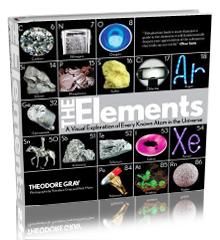Akihabara. | |||
| Sample Image | |||
| Akihabara. Please excuse my fiction, after 259 factual descriptions, something had to snap. "Not now mama, I need more diodes!" the young boy shouted as he ran out the door and down the steps of his family's small apartment in the neighborhood of Tokyo known as Akihabara Electric Town. Her request, whatever it was, had scarcely registered with the boy. His only concern was getting to the market before his favorite diode vendor went home for the night. In the light rain the impossible beauty of neon playing off the wet streets enveloped him in its electric warmth. He walked happily, the arcs guiding him without thinking towards the layers, tunnels, and warrens of shops that were e-town. Approaching the entrance, he brushed aside the hanging wires like vines over a cave. (The stall by the door sold patch cords of all lengths and descriptions, which was rather of a nuisance from a practical point of view, but quite wonderful in the way it defined the passage from outside to inside.) To some people the rows and rows of stalls selling every kind of electrical component, subassembly, tool, and connector might have seemed chaotic, with parts spread out in bins like fruits at the farmer's market. Those people had best stay on their side of the hanging wires, inside was not a world for them. Inside the boy walked down the aisles, turned right at the capacitors, left at the toothless old man still selling variable inductors, seeing in each stall the pattern and meaning of its array of goods. Some shopkeepers were already closing their shutters, but familiarity let him look through them to the parts he knew lay inside, just as he could look through the metal and plastic cases of the components themselves, seeing without seeing the junctions, gaps, dielectrics, fields and forces that gave them their function. He hurried, knowing that if he got there in time, the diode man would stay late for him, as late as it took, patiently showing him how the latest new types worked, their strengths and weaknesses, their phosphors. Yes, their phosphors, for these were no ordinary diodes. They were light emitting. It never occurred to the boy that the diode shop stayed open late only for him. And it registered only dimly that when he was there, the man ignored his other customers, or hurried them off with a quick word and perhaps a too-good price. The diode man knew, sensed, that this scrappy boy was someone to be reckoned with, someone not to be taken lightly, someone whose questions needed to be answered. Of course the diode man couldn't have known, nor could anyone have known, that thirty years later that boy, working in one of the great electric industrial firms born and bred in the neighborhoods around Akihabara after the war, would make the final breakthrough that pulled the plug on neon, mercury, and tungsten light. The breakthrough pinhead that took in thirty watts of electric power and turned it into twenty-nine point nine watts of the purest white light. The breakthrough that briefly sent the price of thulium through the roof until people realized there were plenty of new sources now that anyone cared to find them. The breakthrough that let us paint our walls with liquid light, more radiant, more beautiful, more magical even than the sheltering neon he would remember reflecting off the streets and sidewalks of his boyhood in Akihabara. But that was all for the future. Today he needed blue. Not just any blue, but the right blue to balance the spectrum of his latest light bulb and bring out the pale violet of his mother's flowers. Two hundred yen, but worth it for a good blue. The kind of blue you get only from gallium. Source: Theodore Gray Contributor: Theodore Gray Acquired: 3 October, 2002 Price: $40 Size: 1" Purity: <1% | |||
|

